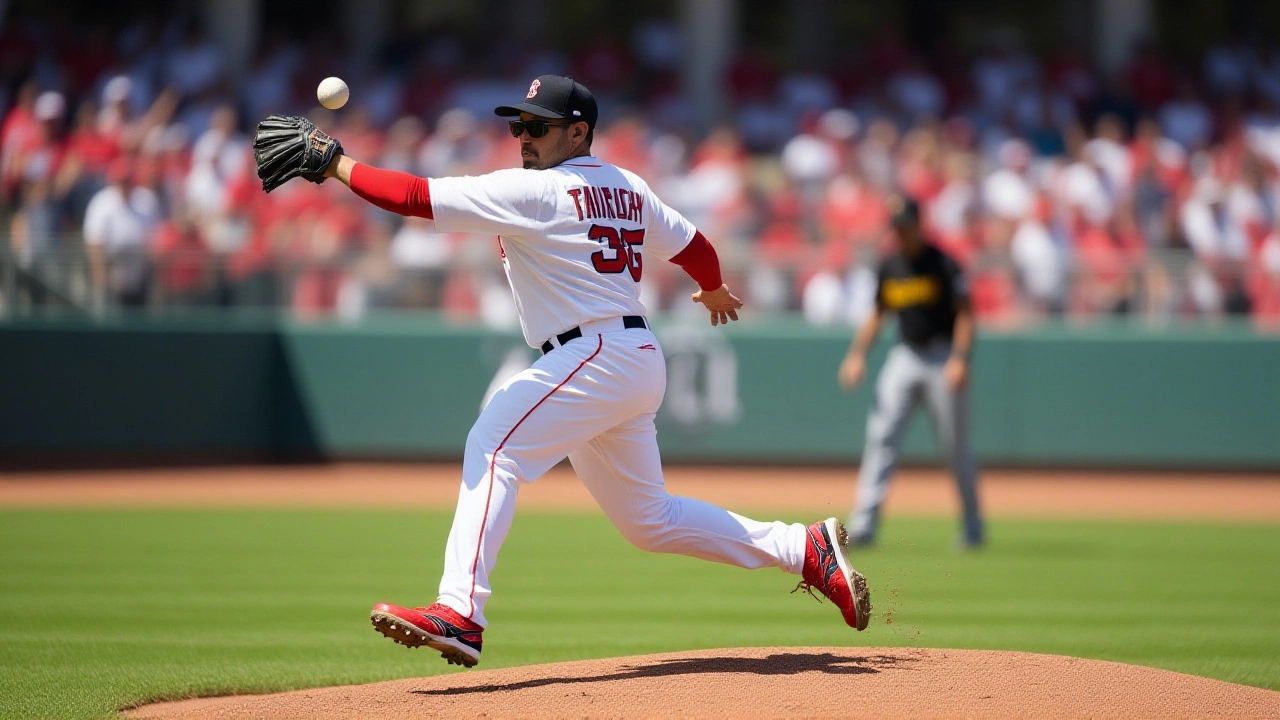When Alex Cora saw his starter rotation crumble in mid‑September, the Boston Red Sox leaned heavily on an aggressive bullpen plan that paid off in the postseason.
By September 17, 2025, the Red Sox were juggling a historic injury list that left twelve pitchers unavailable, forcing Cora to reshuffle his staff for the final stretch against the Tampa Bay Rays and the Oakland Athletics. The manager’s decision to move Payton Tolle to the bullpen and schedule high‑leverage arms like Garrett Crochet for potential playoff starts became the cornerstone of Boston’s late‑season revival.
Injury Crisis Sets the Stage
Boston entered the final week of the regular season with its rotation riddled by sore arms. Starting pitcher Lucas Giolito was battling a forearm strain, while left‑hander Brayan Bello was on the 10‑day IL after a shoulder flare‑up. Relievers weren’t spared either; closer Aroldis Chapman was nursing a minor elbow tweak.
“We were looking at a ‘what‑if’ scenario every day,” Cora admitted in a press conference on September 10. “If we don’t get fresh arms in, the season slips away.”
The injuries forced the club to call up two top prospects – a hard‑throwing right‑hander from Triple‑A and a slick knuckle‑baller from Double‑A – but the real pivot came when Cora announced a role change for Tolle, formerly a starter for the 2024 season.
Late‑Season Moves: Tolle, Harrison, Early
On September 13, Cora declared that Tolle would shift permanently to the bullpen for the remainder of the year, freeing up a slot for younger arms to start. “Payton’s a guy who can eat innings,” Cora said, “and we need that durability now.”
Alongside Tolle, Kyle Harrison was slated to start Saturday’s game against the Rays, while rookie Connelly Early earned his first two major‑league starts on the preceding Sunday and Monday.
Early’s numbers were eye‑catching: he surrendered just one run on ten hits, striking out 18 batters over 10.1 innings. "He’s got poise beyond his years," bullpen coach Brian Butterfield praised, "and that’s exactly what we need when the rest of the staff is thin."
Crafting the Bullpen Strategy
With the rotation in flux, Cora’s game‑by‑game blueprint turned into a high‑stakes chess match. The plan for the Oakland series – the final two games of the regular season – placed Giolito and Bello as starters, while reserving Crochet for a potential extra start.
"Garrett’s a workhorse, and we wanted to give him the chance to pitch twice more before the playoffs," Cora explained on September 15. "If we get to the Wild Card, I want him fresh and confident."
Weeks later, on September 30, 2025, the Red Sox faced the Rays in the Wild Card GameFenway Park. Crochet took the mound for his first postseason start, delivering six solid innings with three strikeouts and no runs. Chapman followed, closing the game with a flawless ninth inning that sealed a 4‑2 victory.
The aggressive use of the bullpen, especially the willingness to move a former starter like Tolle into relief, sparked a noticeable boost in team morale. "When the manager shows trust in you, you feed off that energy," Tolle said after his one‑inning relief appearance on Saturday, where he struck out the side.
Playoff Outcomes and Immediate Impact
The Red Sox rode the momentum from the Wild Card win into a hard‑fought series against the New York Yankees. While they eventually fell in four games, the bullpen’s performance remained a bright spot. Crochet logged another quality start in Game 2, and Early contributed crucial middle‑relief innings in Games 3 and 4.
Statistically, Boston’s relievers posted a combined ERA of 2.85 in the postseason – a stark contrast to the 4.68 regular‑season ERA the staff sported before the September shake‑up.

Expert Analysis: Was the Risk Worth It?
Baseball analyst Jenna Sullivan of ESPN noted, "Cora’s decision to cannibalize his rotation for bullpen depth mirrors the 2018 Red Sox’s late‑season strategy, but this time the pitcher depth was thinner, making the move riskier." Yet she added, "The payoff was clear – the Red Sox stayed alive and proved that an adaptable bullpen can compensate for starting woes."
Veteran sports columnist Mike O’Leary highlighted the psychological angle: "When you see a manager make bold calls, players trust the process. That trust translated into clutch performances when it mattered most."
Looking Ahead: What This Means for 2026
As the offseason approaches, Boston faces decisions about its pitching staff. With the injuries largely resolved, the front office must decide whether to retain Tolle as a reliever or revert him to a starter role. The club also has to consider long‑term contracts for Crochet, whose postseason showing raised his market value.
"We’ll evaluate all options, but the flexibility we gained this September will influence how we build the rotation next year," said general manager Chaim Bloom in a recent interview.
In the meantime, fans will remember September 2025 as the month the Red Sox’s bullpen became the unsung hero of a surprising playoff run.
Key Facts
- Injury list left 12 pitchers unavailable by mid‑September 2025.
- Payton Tolle shifted from starter to bullpen on September 13.
- Connelly Early posted a 1.00 ERA with 18 K's over 10.1 innings.
- Garrett Crochet started the Wild Card Game on September 30 at Fenway Park.
- Red Sox bullpen posted a 2.85 ERA in the 2025 postseason.
Frequently Asked Questions
How did the bullpen changes affect the Red Sox’s playoff chances?
By moving Payton Tolle to relief and giving Connelly Early more work, Cora added depth that helped the team stave off a potential collapse. The revamped bullpen lowered the team’s ERA from 4.68 to 2.85 in the postseason, directly contributing to the Wild Card win and extending the season.
What role will Payton Tolle likely play next season?
Management is weighing whether to keep Tolle in the bullpen, where he showed effectiveness, or revert him to a starting role now that the injured list has cleared. His 2025 relief outings suggest he could become a versatile swing‑man, but contract talks will hinge on long‑term health and performance.
Why was Garrett Crochet’s playoff start considered a turning point?
Crochet entered the Wild Card Game with limited regular‑season work due to the crowded rotation. His six‑inning, zero‑run performance not only secured the win but also proved that the aggressive scheduling paid off, giving Boston a reliable ace for the crucial games ahead.
How did the injuries impact the Red Sox’s regular‑season record?
The team slipped from a potential 94‑68 finish to a 90‑72 record, dropping to the Wild Card spot. The spate of IL placements forced Cora to rely on minor‑league call‑ups and role changes, which ultimately kept the club in contention.
What does this bullpen strategy suggest for other MLB teams?
Cora’s willingness to shift starters to relief roles could inspire other clubs facing late‑season injuries. It underscores the value of versatile pitchers who can adapt, and highlights the strategic benefit of preserving top arms for high‑leverage playoff scenarios.

